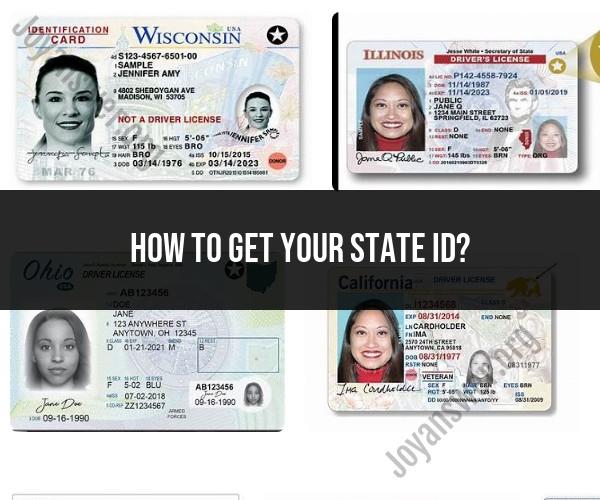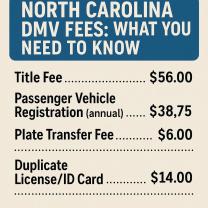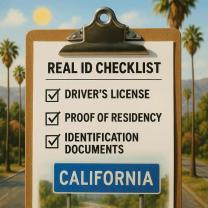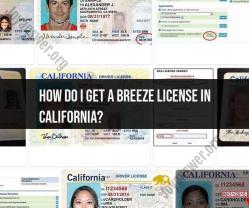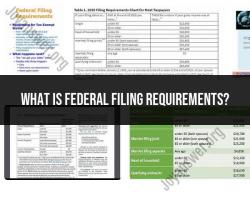How to get your state ID?
To obtain a state ID, you'll need to follow a specific application process that varies from state to state in the United States. Here's a general guide on how to get a state ID:
Check Eligibility:
- Verify the eligibility criteria for obtaining a state ID in your state. Eligibility requirements may include age and residency.
Gather Required Documents:
- Collect the necessary documents for your state ID application. Commonly required documents include:
- Proof of identity (e.g., birth certificate, passport, or immigration documents).
- Proof of residency (e.g., utility bills, rental agreements, or a lease).
- Social Security card or proof of Social Security number.
- Any additional documents required by your state's Department of Motor Vehicles (DMV) or equivalent agency.
- Collect the necessary documents for your state ID application. Commonly required documents include:
Complete the Application Form:
- Obtain an application form for a state ID from your state's DMV or equivalent agency. You can often find these forms online as well. Fill out the form completely and accurately.
Visit the DMV or Equivalent Agency:
- Locate the nearest DMV office or equivalent agency in your state. You may need to make an appointment, so check the agency's website or call ahead to confirm their requirements.
Submit Documents and Application:
- Bring all the required documents, the completed application form, and any applicable fees to the DMV office or agency. Fees can vary by state, so check the current fee schedule.
Provide Biometric Information:
- You may be required to have your photo taken and provide fingerprints or other biometric information for the state ID.
Take a Vision Test:
- In many states, you will need to pass a vision test to ensure you can safely operate a motor vehicle. If your state requires a vision test, be prepared to take it.
Pay the Fees:
- Pay any fees associated with obtaining a state ID. Payment methods accepted can include cash, check, credit/debit cards, or electronic funds transfer, depending on your state's DMV.
Receive Temporary ID (if applicable):
- In some states, you may receive a temporary state ID while your permanent one is being processed. Keep this temporary ID in a safe place.
Receive Your State ID:
- Once your application is processed, you will receive your state ID either in person at the DMV or by mail, depending on your state's procedures.
Verify the Information:
- Carefully review the information on your state ID card to ensure it is accurate. If there are any errors, notify the DMV immediately to have them corrected.
Store Your ID Safely:
- Keep your state ID card in a secure and accessible location. It's essential to have it readily available for various identification purposes.
Remember that the specific requirements and procedures for obtaining a state ID can vary significantly from state to state. Be sure to check your state's DMV or equivalent agency's official website or contact them directly to get detailed and up-to-date information on the application process, fees, and required documents for your state ID.
Getting Your State ID: A Step-by-Step Guide to the Application Process
Getting a state ID is a relatively straightforward process, but it can vary depending on the state you live in. Here is a general step-by-step guide to the application process:
- Gather the required documents. Most states require the following documents to apply for a state ID:
- Proof of identity, such as a birth certificate or passport
- Proof of residency, such as a utility bill or bank statement
- Social Security number (optional)
- Visit your local DMV or state ID office. You can find the location of your nearest DMV or state ID office by searching online or contacting your state's motor vehicle department.
- Complete the application form. The application form will ask for your personal information, such as your name, address, and date of birth. You may also need to provide your Social Security number, but this is not required in all states.
- Pay the application fee. The application fee for a state ID varies depending on the state.
- Have your photo and fingerprints taken. You will need to have your photo and fingerprints taken at the DMV or state ID office.
- Receive your state ID. Once your application has been processed, you will receive your state ID in the mail.
Here are some additional tips for getting your state ID:
- Make sure to bring all of the required documents with you to the DMV or state ID office.
- Fill out the application form completely and accurately.
- Be prepared to pay the application fee.
- Dress appropriately. You will need to have your photo taken, so it is best to wear neat, professional attire.
- Be polite and respectful to the DMV or state ID staff.
If you have any questions about the state ID application process, you can contact your state's motor vehicle department for assistance.
